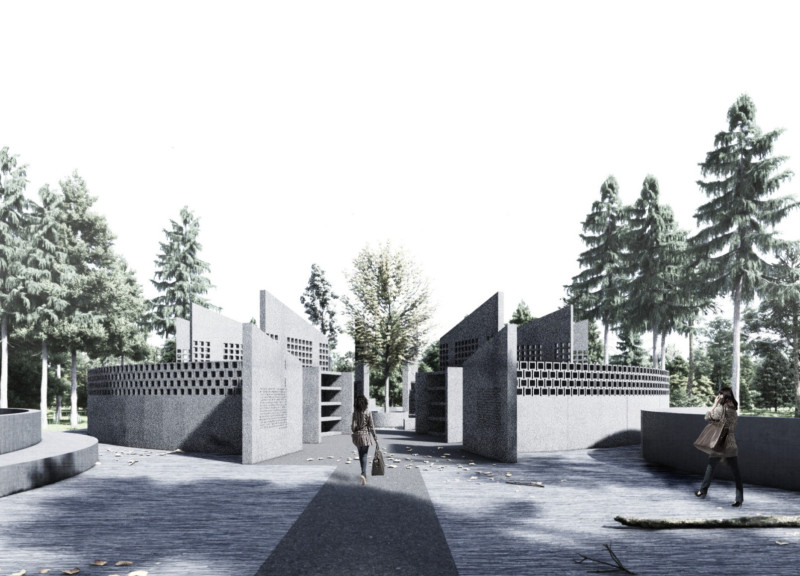5 key facts about this project
Grey Zone of TRANQUILITY is a memorial space designed to foster reflection and remembrance. Located away from the city's hustle and bustle, the project serves as a quiet place for individuals to come to terms with their emotions and connect spiritually with loved ones who have passed. The design centers on a chamber of memories that promotes a sense of peace and privacy, enabling visitors to experience solitude while still being in a shared environment.
Spatial Organization
The layout features distinct areas that carefully guide visitors through different experiences. There are zones dedicated to isolation, contemplation, and communal gatherings. This thoughtful organization helps people navigate the space based on their emotional needs. Individuals can move freely, whether they seek private reflection or wish to share moments with others, creating a balance of public and personal interactions.
Nature Integration
The design emphasizes harmony with the natural landscape. By situating the site away from urban distractions, it encourages a deeper connection to the environment. Natural elements are incorporated throughout the space, offering visitors a chance to experience tranquility outdoors. This relationship with nature enhances the overall calmness of the setting and allows for moments of quiet reflection.
Materiality
Key materials used in the construction include steel bar, concrete hollow blocks, reinforced concrete, and hollow brick walls. These materials ensure structural strength and durability. They also support the theme of memorialization, reinforcing the concept of permanence while acknowledging the fleeting nature of memory. The choice of materials adds depth to the overall aesthetic while serving a functional purpose.
Functional Features
The design includes practical elements, such as a candlestick area that captures and recycles wax oil. This feature reflects a commitment to sustainability, allowing visitors to engage in an environmentally conscious way. It highlights not just the memorial aspect, but also the potential for responsible practices within such spaces.
A central detail within the chamber invites visitors to pause and reflect. This element encourages contemplation and connection, serving as a reminder of the personal ties that define our relationships with memory and loss.





















































